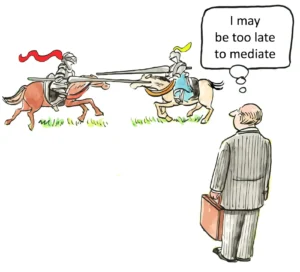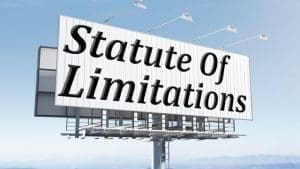What are the current trends in law firm billing rates and their impact on clients and firms?
The landscape of law firm billing rates is undergoing significant transformation as we move through 2025. Senior partners at elite US law firms are now commanding hourly rates approaching $3,000, while associates at these same firms increasingly bill over $1,000 per hour. This dramatic escalation represents a fundamental shift in the legal services market, creating both challenges and opportunities for clients and firms alike. The rising tide of legal fee increases shows no signs of abating, with many Am Law 50 firms implementing rate hikes of 10-13% in the past year alone.
These attorney hourly rates reflect broader economic forces reshaping the legal industry. A tight attorney labor market, increased demand in transactional practices, and fierce competition for lateral talent have all contributed to this upward pressure on rates. For corporate legal departments and individual clients, these increases necessitate new strategies for managing legal expenses while still securing high-quality representation. Meanwhile, law firms must balance their need for revenue growth against the risk of client attrition as fee sensitivity intensifies.
The Current State of Law Firm Billing Rates
The evolution of law firm pricing has reached unprecedented territory. According to industry analysts, standard billing rates for Am Law 50 firms now range from $1,900 for partners to $2,100 for senior partners. This represents a substantial increase from previous years, with the ceiling continuing to rise. At least 17 major firms are expected to set standard hourly rates for senior partners between $2,400 and $2,875 by the end of 2025, doubling the number of firms in this premium bracket compared to just a year ago.
This trend extends beyond just the most senior attorneys. Third-year associates at prestigious firms now command rates as high as $1,000 per hour, a threshold that would have been unthinkable for even partner-level attorneys not long ago. The 2024 Strategic Pricing Survey from LawVision found that approximately 60% of firms raised rates by 6% or more, a pattern that has continued into 2025. These increases significantly outpace inflation, indicating that other factors are driving this pricing surge.
The geographic disparity in legal billing practices remains pronounced. Washington, DC continues to lead the nation with average hourly billing rates of $462, while West Virginia represents the lower end of the spectrum at $195 per hour. Practice area specialization also significantly impacts rates, with bankruptcy law commanding the highest average hourly rate at $439, compared to juvenile law at $136. These disparities highlight the importance of context when evaluating the reasonableness of legal fees.
Key Drivers Behind Rate Increases
Several interconnected factors are fueling the current surge in law firm rate increases. Understanding these drivers is essential for both firms setting their rates and clients negotiating them. The most significant factors include economic pressures, talent competition, and changing client demands.
Inflation and rising operational costs have undoubtedly contributed to higher billing rates. Law firms, like other businesses, have faced increased expenses for office space, technology infrastructure, and employee benefits. However, the fact that legal rate increases have consistently outpaced inflation suggests additional forces at work. Firms have seized opportunities to expand profit margins beyond what would be necessary to simply maintain pace with rising costs.
The competition for top legal talent has intensified dramatically. Elite firms are engaged in a perpetual battle to attract and retain star attorneys, driving up compensation packages. This salary arms race necessitates higher billing rates to maintain profitability. The growth in demand for legal work is outpacing the entry of new attorneys into the labor market, creating a seller’s market for legal talent that shows no signs of abating.
Increased demand in specific practice areas has also contributed to rate escalation. M&A and transactional practices have seen particularly strong activity, with projections indicating a 10% rise in M&A activity in 2025. This surge is attributed to several factors, including the conclusion of election uncertainty, a burst in economic activity, and the lowering of interest rates. As private and corporate cash levels increase, the resulting wave of transactions creates premium demand for specialized legal expertise.
Impact on Client Relationships
The relationship between law firms and their clients is evolving in response to these billing rate trends. As rates climb to unprecedented heights, clients are becoming increasingly sophisticated in how they evaluate and manage legal expenses. This heightened scrutiny is reshaping the traditional attorney-client dynamic in several important ways.
Client tolerance for inefficiencies has diminished significantly. Corporate legal departments are analyzing invoices with unprecedented rigor, challenging time entries that appear excessive or poorly described. The days when clients would simply pay bills without question have largely disappeared. Instead, detailed bill review has become standard practice, with many companies employing dedicated legal operations professionals to manage outside counsel spending.
The risk of client attrition has increased as businesses evaluate whether higher fees justify the value received. This calculation varies by matter type and importance. For bet-the-company litigation or high-stakes transactions, clients may reluctantly accept premium rates. However, for routine matters, the calculus has shifted dramatically, with many clients seeking alternative providers or bringing work in-house. This bifurcation of the legal market creates both challenges and opportunities for firms of different sizes and specializations.
Communication about rate increases has become more challenging and potentially damaging to client relationships. Historically, firms would notify clients personally about rate increases, often accompanied by explanations of the value provided. Today, many firms rely on engagement letters or e-billing platforms to communicate increases, reducing the personal touch that once softened the blow. This approach risks making the relationship feel more transactional rather than collaborative.
Strategic Responses from Law Firms
Law firms are developing varied strategies to navigate the changing landscape of legal fee structures. These approaches reflect different positioning in the market and assessments of client sensitivity to rate increases. The most successful firms are finding ways to justify higher rates through enhanced value delivery and technological innovation.
Many top-tier firms are implementing AI-powered solutions to improve efficiency while maintaining or increasing rates. By leveraging artificial intelligence for document review, due diligence, and other routine tasks, these firms can argue that their effective rates remain reasonable even as hourly rates climb. The 2025 Legal Industry Report indicates that 61% of firms report greater efficiency with AI-powered billing and invoicing, cutting errors and speeding up payments.
Firms are also focusing on demonstrating value beyond hourly rates. This includes providing additional services such as industry insights, training programs, and access to knowledge management systems without separate charges. By expanding the value proposition, firms hope to justify premium rates while strengthening client relationships. This approach recognizes that clients are increasingly sophisticated in evaluating the total cost of legal services relative to the value received.
More transparent billing practices are emerging as another strategic response. Detailed invoices that clearly explain the work performed and its value to the client can help justify higher rates. Some firms are proactively offering billing insights and analytics to clients, demonstrating their commitment to transparency and efficiency. This approach can differentiate a firm in a crowded market and build trust even as rates increase.
Client Strategies for Managing Legal Costs
Corporate legal departments and individual clients are not passive participants in this evolving market. They are developing sophisticated strategies to manage legal expenses while still securing high-quality representation. These approaches reflect a more business-oriented view of legal services as a manageable expense rather than an uncontrollable cost.
Negotiating reasonable rate increases has become standard practice for sophisticated clients. Rather than accepting proposed increases at face value, clients are benchmarking rates against peers, requesting detailed justifications, and often proposing alternative arrangements. This negotiation process has become more data-driven, with clients leveraging industry benchmarks and historical billing data to strengthen their position.
Many companies are staffing up legal operations and billing departments to ensure optimal rates and staffing. These specialized professionals analyze outside counsel spending, identify inefficiencies, and implement best practices for cost management. By investing in this expertise, companies can often achieve significant savings that far exceed the cost of the additional headcount.
Alternative fee arrangements (AFAs) have gained traction as clients seek more predictable legal costs. These include fixed fees, contingency arrangements, success fees, and other structures that deviate from the traditional hourly billing model. Smaller and midsize firms have been particularly aggressive in offering AFAs as a way to compete with larger firms. These arrangements can align incentives more effectively and provide budget certainty for clients.
Data analytics has become an essential tool for managing legal spend. By analyzing historical billing patterns, matter outcomes, and firm performance, clients can make more informed decisions about which firms to engage and how to structure fee arrangements. This data-driven approach transforms legal spend management from an art to a science, enabling more strategic decision-making.
The Rise of Alternative Legal Service Providers
The market’s response to escalating law firm rates has included the rapid growth of alternative legal service providers (ALSPs). These organizations offer specialized legal services at lower price points than traditional law firms, creating new competitive pressures in the legal marketplace.
Legal process outsourcing (LPO) has expanded beyond routine document review to include sophisticated services such as contract management, due diligence, and regulatory compliance. By leveraging global talent pools and advanced technology, these providers can deliver quality services at a fraction of the cost of traditional firms. The integration of artificial intelligence and automation technologies has further enhanced the efficiency and effectiveness of LPO services.
Technology-enabled legal service companies have proliferated, offering specialized solutions for specific legal needs. These range from contract analysis platforms to compliance management systems and e-discovery tools. By focusing on narrow slices of legal work that can be systematized and scaled, these companies provide cost-effective alternatives to traditional legal services for routine matters.
In-house legal departments have expanded their capabilities, bringing more work inside rather than paying premium rates to outside counsel. This insourcing trend has been facilitated by improved legal technology that enables smaller teams to handle larger workloads. Corporate legal departments increasingly view themselves as strategic business partners rather than cost centers, making more sophisticated build-versus-buy decisions about legal services.
The Future of Law Firm Billing
The trajectory of legal billing trends suggests continued evolution rather than a return to previous norms. Several emerging developments are likely to shape the future of law firm billing practices and client responses over the coming years.
Value-based pricing models are gaining traction as alternatives to the traditional billable hour. The American Bar Association notes that firms are increasingly transitioning to value-based pricing, fixed fees, and subscription models. These approaches shift the focus from inputs (attorney time) to outputs (results and value delivered), potentially aligning incentives more effectively. While the billable hour remains dominant, its primacy is no longer unchallenged.
Technology will continue to transform both service delivery and billing practices. Blockchain technology holds potential for enhancing billing transparency, providing clients with real-time access to immutable billing records. AI-powered tools will increasingly analyze billing data to identify patterns, predict costs, and optimize staffing decisions. These technological advances may help justify higher rates by demonstrating improved efficiency and outcomes.
Client expectations for transparency and value will intensify. Investment in financial training for attorneys, interdisciplinary collaboration, and improved financial transparency will be essential for client satisfaction and long-term profitability. Firms that can clearly articulate their value proposition and demonstrate efficiency will be better positioned to maintain premium rates in a competitive market.
The globalization of legal services will continue to reshape the competitive landscape. Law firms increasingly rely on global talent pools and 24/7 service capabilities to enhance efficiency and manage costs. This global perspective extends to billing practices as well, with firms navigating the complexities of international billing standards and client expectations across different markets.
Ethical Considerations in Billing Practices
As legal fee rates reach unprecedented heights, ethical considerations surrounding billing practices have gained renewed importance. The legal profession’s self-regulatory framework imposes significant obligations regarding fee reasonableness and transparency that firms must navigate carefully.
The concept of “reasonable fees” remains central to legal ethics, even as market rates climb dramatically. Model Rule 1.5 of the ABA Model Rules of Professional Conduct requires that fees be reasonable, considering factors such as time required, customary rates, the lawyer’s experience, and results obtained. As rates approach $3,000 per hour, questions inevitably arise about whether such fees can be justified as reasonable under any circumstances, regardless of market acceptance.
Billing transparency has become both an ethical imperative and a business necessity. Clients increasingly demand detailed explanations of work performed and value delivered. Ethical billing practices require clear communication about rates, likely expenses, and the basis for fee calculations. Firms that fail to provide this transparency risk not only ethical violations but also client dissatisfaction and potential disputes.
Common billing discrepancies continue to create ethical challenges. These include excessive time entries, inadequate descriptions, factual inconsistencies, duplicative work, inappropriate staffing, block billing, and intra-office communication charges. Each of these practices raises questions about whether clients are being billed fairly and transparently. As client scrutiny intensifies, firms must be vigilant in ensuring their billing practices meet both ethical standards and client expectations.
Technology’s Role in Transforming Legal Billing
Technological innovation is fundamentally changing how legal services are delivered and billed. These advances create both opportunities and challenges for law firms seeking to maintain profitability while meeting client expectations for efficiency and transparency.
Automated billing systems have dramatically improved the accuracy and efficiency of the billing process. These systems can track time, generate invoices, process payments, and update trust ledgers with minimal human intervention. According to the 2025 Legal Industry Report, 68% of firms still struggle with fee collection, but those embracing automation and online payments are turning revenue headaches into financial stability.
AI-powered billing analysis tools can identify patterns and anomalies in billing data, helping firms optimize their practices and demonstrate value to clients. These tools can predict future costs based on historical data, identify inefficiencies, and suggest improvements. By leveraging these insights, firms can justify premium rates through demonstrated efficiency and superior outcomes.
Digital client portals provide real-time access to billing information, enhancing transparency and client satisfaction. These portals allow clients to review time entries, monitor budget status, and analyze spending patterns. By providing this level of transparency, firms can build trust even as rates increase. The 2025 Legal Industry Report notes that firms are moving beyond hybrid and remote work to fully embrace digital operations, with 78% using e-signatures, 76% relying on e-filing, and 64% adopting cloud-based billing.
Practice Area Variations in Billing Trends
The impact of rising attorney fee rates varies significantly across practice areas. Understanding these variations is essential for both firms setting rates and clients evaluating their reasonableness. Several factors contribute to these differences, including market demand, specialization requirements, and outcome value.
Transactional practices have seen particularly strong rate growth, driven by increased M&A activity and competition for specialized expertise. As interest rates begin to lower and the regulatory environment becomes more deal-friendly, demand for these services has intensified. This demand surge has enabled firms to implement substantial rate increases without significant client pushback, particularly for high-value transactions where legal fees represent a small percentage of the overall deal value.
Litigation rates have also climbed, though with more variation based on case type and importance. Bet-the-company litigation continues to command premium rates, with clients willing to pay top dollar for the best representation in high-stakes matters. However, routine litigation faces more price sensitivity, with clients increasingly seeking alternative fee arrangements or directing work to lower-cost providers.
Specialized practice areas such as intellectual property, white-collar defense, and securities litigation command the highest rates due to the specialized expertise required and the high stakes involved. These premium rates reflect both the scarcity of top talent in these fields and the significant value that expert representation can deliver. As these specialties become increasingly complex and technical, the premium commanded by true experts continues to grow.
Regional Variations in Legal Billing
Geographic location remains a significant factor in legal fee structures, with substantial variations across regions and markets. These differences reflect local economic conditions, competitive dynamics, and client expectations. Understanding these regional variations is essential for both firms setting rates and clients evaluating their reasonableness.
Major metropolitan markets such as New York, Washington DC, and San Francisco continue to command the highest rates. These markets feature concentrations of sophisticated clients with complex legal needs, creating premium demand for specialized expertise. The presence of global financial institutions, technology companies, and regulatory agencies in these markets drives demand for high-end legal services, supporting premium rates.
Secondary markets have seen accelerating rate growth as national firms expand their presence and local firms raise rates to retain talent. Cities such as Austin, Denver, and Nashville have experienced particularly strong growth in legal rates as their business communities have expanded and diversified. This trend reflects both the nationalization of legal practice and the increasing sophistication of clients in these markets.
International markets present a complex picture, with rates in global financial centers approaching US levels while emerging markets offer significant discounts. London, Hong Kong, and Singapore command premium rates comparable to top US markets, while developing markets in Asia, Africa, and Latin America offer substantially lower rates even for sophisticated work. This global rate disparity creates opportunities for arbitrage by savvy clients with international legal needs.
The Psychology of Legal Billing
The psychological aspects of legal billing play a crucial role in how rates are set, communicated, and received. Understanding these dynamics can help both firms and clients navigate the billing relationship more effectively and reduce friction around rate increases.
Rate anchoring significantly influences perceptions of reasonableness. When clients see rates approaching $3,000 per hour for senior partners, associate rates of $1,000 per hour may seem more reasonable by comparison. Firms strategically use this anchoring effect when structuring their rate cards, establishing premium rates for top partners that make other timekeeper rates appear more moderate.
Communication timing and framing around rate increases dramatically impact client reception. Increases announced well in advance, accompanied by explanations of value and market context, typically face less resistance than sudden or poorly explained changes. Firms that invest in thoughtful communication strategies around rate increases often experience less client pushback and attrition.
Value perception ultimately matters more than absolute rate levels. Clients are willing to pay premium rates when they perceive commensurate value, particularly for high-stakes matters with significant business impact. Conversely, even moderate rates may face resistance when clients question the value received. This dynamic explains why some firms successfully maintain extremely high rates while others struggle with much lower fee structures.
Innovations in Legal Fee Arrangements
The market’s response to rising hourly billing rates has included significant innovation in fee arrangements. These alternative approaches seek to align incentives, improve predictability, and deliver better value to clients while maintaining firm profitability.
Fixed fee arrangements have gained traction for well-defined matters with predictable workflows. These arrangements provide budget certainty for clients while incentivizing efficiency for firms. When properly structured, fixed fees can benefit both parties by eliminating billing disputes and focusing attention on outcomes rather than inputs. The key challenge lies in accurately scoping work and building in appropriate contingencies for unexpected developments.
Success fees and contingency arrangements align compensation with outcomes, creating shared incentives for positive results. These arrangements are increasingly used not only in traditional contingency practices like personal injury but also in commercial litigation, transactions, and even some regulatory matters. By sharing risk and reward, these models can create stronger partnerships between firms and clients.
Subscription models provide ongoing access to legal services for a fixed monthly or annual fee. These arrangements work particularly well for clients with regular, predictable legal needs across multiple areas. By smoothing cash flow for both client and firm, subscription models can reduce financial friction and foster longer-term relationships. They also encourage clients to seek legal advice earlier, potentially preventing more costly problems.
The Role of Data Analytics in Legal Billing
Data analytics has transformed legal billing management from an art to a science. Both firms and clients increasingly leverage sophisticated analytics to optimize billing practices, evaluate performance, and make strategic decisions about legal spending.
Benchmarking against industry standards helps both firms and clients evaluate the reasonableness of rates and staffing models. By comparing rates, staffing patterns, and outcomes across similar matters and firms, stakeholders can identify opportunities for improvement and negotiate more effectively. These benchmarks provide objective reference points in what has historically been an opaque market.
Predictive analytics enables more accurate budgeting and resource allocation. By analyzing historical data on similar matters, stakeholders can develop more reliable projections of likely costs and outcomes. These predictions help clients budget more effectively and allow firms to staff matters appropriately from the outset, reducing surprises and disputes.
Performance metrics increasingly link billing to outcomes and client satisfaction. Rather than focusing exclusively on hours billed and revenue generated, sophisticated firms track metrics such as client retention, matter outcomes, and efficiency improvements. These broader performance measures provide a more holistic view of firm performance and can justify premium rates through demonstrated value.
Regulatory Considerations in Legal Billing
The regulatory environment surrounding legal fees continues to evolve, creating both constraints and opportunities for firms setting their billing practices. Understanding these regulatory considerations is essential for compliance and strategic planning.
Bar association rules regarding reasonable fees remain relevant even as market rates climb dramatically. While these rules provide considerable flexibility, they do impose outer limits on what can be charged regardless of client willingness to pay. Firms must be prepared to justify their rates as reasonable based on factors such as complexity, expertise required, and results obtained.
Fee-splitting regulations impact collaboration between firms and with alternative providers. These rules vary by jurisdiction but generally require transparency and client consent for fee-sharing arrangements. As collaborative service delivery models become more common, navigating these regulations becomes increasingly important for firms seeking to optimize service delivery.
Consumer protection regulations increasingly impact legal billing, particularly for individual clients and small businesses. These regulations may impose requirements regarding fee disclosures, billing practices, and dispute resolution mechanisms. Firms serving these client segments must ensure their billing practices comply with applicable consumer protection laws in addition to professional responsibility rules.
Conclusion: Navigating the Future of Legal Billing
The landscape of law firm billing rates continues to evolve rapidly, creating both challenges and opportunities for firms and clients alike. As rates reach unprecedented heights, particularly at elite firms, all stakeholders must adapt their strategies to navigate this changing environment effectively.
For law firms, the key challenge lies in justifying premium rates through demonstrated value and efficiency. This requires investment in technology, talent development, and client communication. Firms that can clearly articulate their value proposition and deliver measurable results will be better positioned to maintain premium rates even as client scrutiny intensifies.
For clients, sophisticated management of legal expenses has become essential. This includes leveraging data analytics, negotiating effectively, exploring alternative fee arrangements, and strategically allocating work across different provider types based on value and risk. By taking a more active role in managing legal spend, clients can secure high-quality representation while controlling costs.
The
Citations:
- https://brightflag.com/resources/law-firm-billing-rates/
- https://www.valeopartners.com/another-year-of-attorney-fee-rate-increases-what-you-missed-from-the-2025-early-indicators-webinar/
- https://www.lawpay.com/support/resources/reports/2025-legal-industry-report/
- https://www.irvinebookkeeping.com/post/innovations-in-law-firm-billing-practices
- https://www.legalbillreview.com/blog/2025-billing-rate-increase
- https://www.americanbar.org/groups/law_practice/resources/law-practice-magazine/2025/january-february-2025/law-firm-finance-trends-and-predictions-for-2025/
- https://www.clio.com/blog/law-firm-billing/
- https://ibridgellc.com/optimizing-legal-billing-and-invoicing-processes-with-lpo-enhancing-accuracy-and-transparency/
- https://www.legal.io/articles/5545107/Big-Law-to-Raise-Billing-Rates-in-2025-But-Profitability-Gains-Uncertain
- https://www.jdjournal.com/2025/02/27/law-firm-billing-rates-escalate-the-3000-per-hour-benchmark-and-what-it-means-for-the-legal-industry/
- https://caldwelllaw.com/news/significant-billing-rate-hikes/
- https://www.law.com/americanlawyer/2025/02/24/billing-rates-keep-increasing-gcs-question-whether-their-growth-is-sustainable/
- https://www.accuratelegalbilling.com/blog/will-more-law-firms-outsource-billing-in-2025-heres-what-you-need-to-know
- https://www.axiomlaw.com/resources/press-releases/axiom-helps-in-house-legal-teams-mitigate-impact-of-annual-law-firm-rate-increases
- https://www.valeopartners.com/wp-content/uploads/2024/06/Valeo-Partners-2025-Attorney-Rate-Setting-Trends.pdf
- https://knowledgecenter.acba.org/resource/legalbillreviewcom-2025-billing-rate-increases-why-detailed-bill-review-is-essential
- https://www.law.com/americanlawyer/2025/01/22/senior-associates-billing-rates-see-the-biggest-jump/
- https://www.reuters.com/legal/legalindustry/3000-an-hour-lawyer-isnt-unicorn-anymore-2025-02-27/
- https://www.thomsonreuters.com/en-us/posts/legal/legal-market-report-analysis-opportunity-cost/
- https://www.clio.com/blog/lawyer-statistics/
- http://www.law.com/americanlawyer/americanlawyer/2025/02/24/billing-rates-keep-increasing-gcs-question-whether-their-growth-is-sustainable/
- https://www.mycase.com/blog/general/lawyer-statistics/
- https://www.globenewswire.com/news-release/2025/03/14/3042776/0/en/US-Patent-Litigation-Law-Firm-Hourly-Rate-Report-2025-As-1-of-the-Most-Frequent-Cases-in-Federal-Courts-Rates-for-Partners-at-Large-Law-Firms-to-Hit-2-400-this-Year-and-Continue-to.html
- https://www.abajournal.com/news/article/some-top-partners-in-biglaw-will-bill-nearly-3000-an-hour-next-year-report-says
- https://www.epiqglobal.com/en-jp/resource-center/articles/get-most-out-of-your-legal-billing-data
- https://www.law.com/americanlawyer/2024/09/24/senior-partners-approach-3000-an-hour-as-more-billing-rate-hikes-expected-in-2025/
- https://www.mycase.com/blog/legal-billing/law-firm-billing/
- https://www.bestlawfirms.com/articles/billable-hours-endure-law-firms-expand-offerings/6208
- https://www.linkedin.com/posts/lawdotcomintl_senior-partners-approach-3000-an-hour-activity-7259309087081811968-ESkn
- https://natlawreview.com/article/5-ways-legal-billing-software-increases-law-firm-revenue
- https://taxprof.typepad.com/taxprof_blog/2024/10/2025-hourly-billing-rates-for-elite-law-firms-3000-for-senior-partners-1000-for-first-year-associate.html
- https://www.simplelaw.com/blog/legal-billing-best-practices
- https://abovethelaw.com/2024/08/the-more-revenue-a-law-firm-has-the-more-they-can-increase-billing-rates/
- https://www.lawpay.com/about/blog/lawyer-hourly-rate-by-state/
- https://www.thomsonreuters.com/en-us/posts/wp-content/uploads/sites/20/2025/01/State-of-the-US-Legal-Market-Report-2025.pdf
- https://www.altfeeco.com/resources/law-firm-billing




















